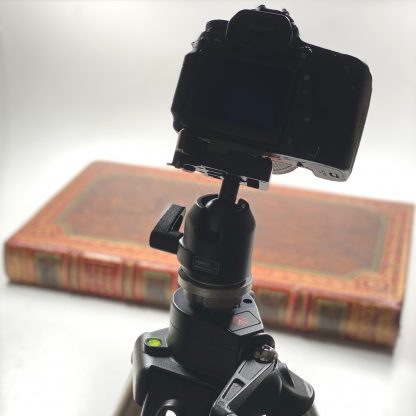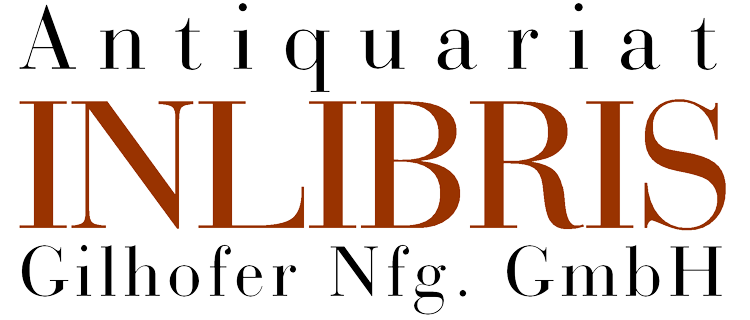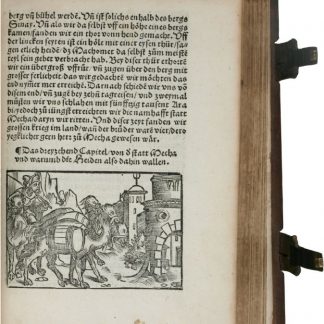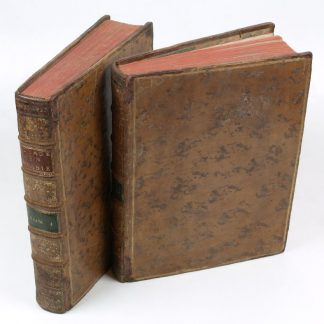
The most complete edition of Botero's geography of the entire world
Le relationi universali [...] divise in sette parte. Nuovamente ristampate, & ricorrette. - Aggiunta alla quarta parte dell'Inde.
Small 4to. A total of 920 pp. in 8 parts. With woodcut portraits of the author, 4 folding engraved maps, and 32 large woodcut illustrations attributed to Hans Burgkmair. 18th century half vellum over old boards. Stored in custom-made half morocco box.
€ 28.000,00
The most complete edition of Botero's influential world geography, and the first to include the "Aggiunta", illustrated by the woodcuts (attributed to Hans Burgkmair) depicting fantastical and mythological creatures, and "natives" of foreign lands in Africa, Arabia, etc., based on Pliny and other fabulist authors. Arabia is pictured on both the Asia and the Africa plate.
The "Relationi universali" form a "vast compendium of contemporary knowledge of the world - physical, geographical, anthropological, economic, political, and religious" (Headley): a comprehensive repertory of anthropology and geography, with systematic accounts of the physical properties, demographics, economic resources, military power, and political constitution of all states of the world. Botero describes the states and kingdoms of Europe, the Americas, Asia (including China, Thailand and Japan) and Central Africa, with special emphasis on their economy, government and population. He offers extensive accounts of the Middle East and the Ottoman Empire, Persia and the Portuguese eastern commerce, with references to Ormuz (pt. 1, p. 117f., pt. 3, pp. 125ff.), the Arabian Gulf, and Bahrain (which is described as rich in dates as well as pearls; pt. 1.2, p. 26).
Giovanni Botero (ca. 1544-1617) used the wealth of geographical information he assembled to develop his political and demographic theories. His great compilation, first published between 1591 and 1596, celebrates the spread of Catholic influence into distant parts of the world, including the New World, Florida and Mexico.
Near-contemporary handwritten ownership "Di Alamanno Orsucci" to flyleaf (the John Carter Brown library has a 1596 copy of Anania's "Universale fabrica del mondo" with identical provenance: H596.A533u). The title-page shows a 19th-century stamped ownership "A. Borromei".
Small 4to (160 x 210 mm). 8 parts in 1 volume. (16), 208, 71, (1) pp.; 34 pp., 1 blank leaf, 131, (1) pp.; 156, (8) pp.; (16), 68 pp.; (8), (64) pp.; (8), 56, 52 pp.; 22 pp. 8 titles with woodcut portrait of the author, 4 folding engraved maps of the continents (America; Asia; Africa; Europe), and 32 large woodcut illustrations attributed to Hans Burgkmair and his workshop in the "Aggiunta". 18th century half vellum over old boards. Stored in custom-made half morocco fleece-lined solander box.
Edges of 4 leaves slightly frayed, one with small blank piece torn away, one image with small loss touching a few letters on verso, some slightly shaved. 2 sections misbound, corner of one leaf torn away with loss of a couple of letters of side-note, a few headlines slightly shaved (2 leaves with loss of pagination numerals in part 3). Final part with light dampstains and paper slightly softened.
Alden/Landis 618/20. Sabin 6806. OCLC 823255982. Headley, "Geography and Empire in the Late Renaissance: Botero's Assignment, Western Universalism, and the Civilizing Process", in: Renaissance Quarterly 53 (2000), pp. 1119-1155. Cf. Borba de Moraes I, 100. Not in Blackmer or Atabey.





